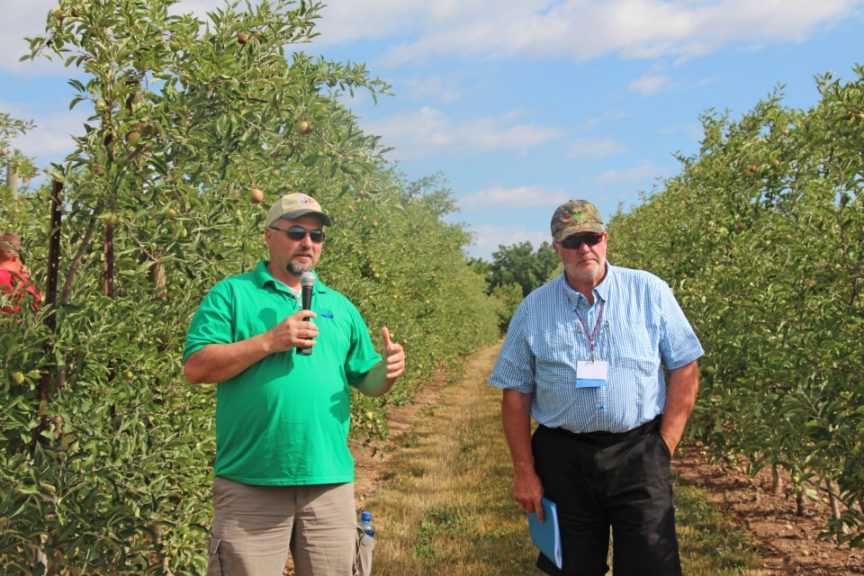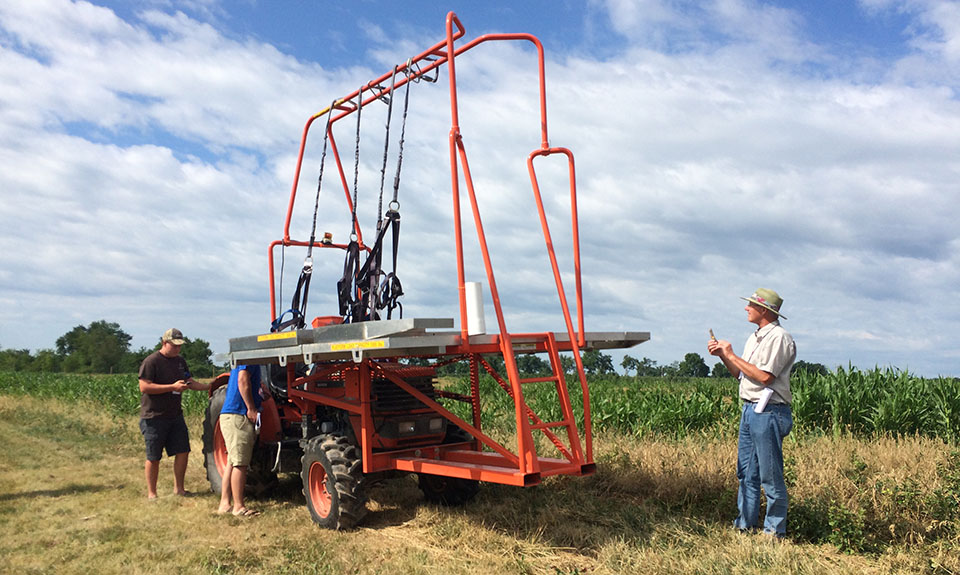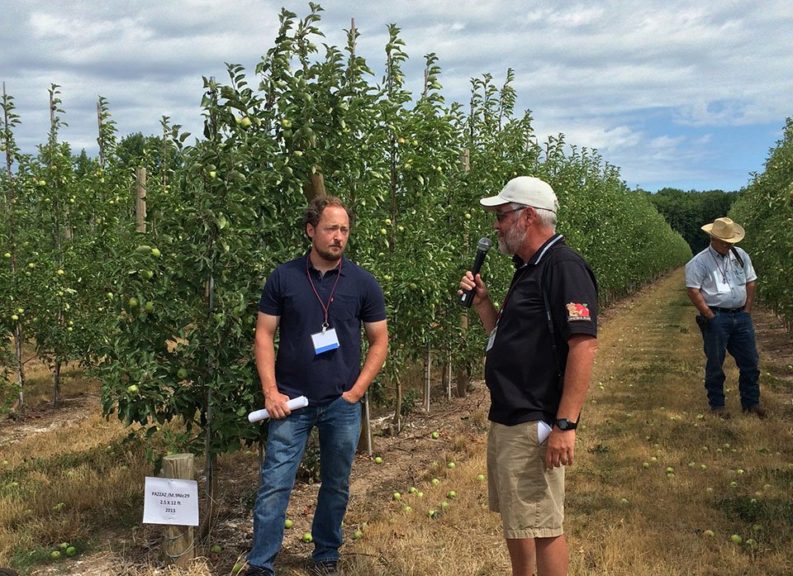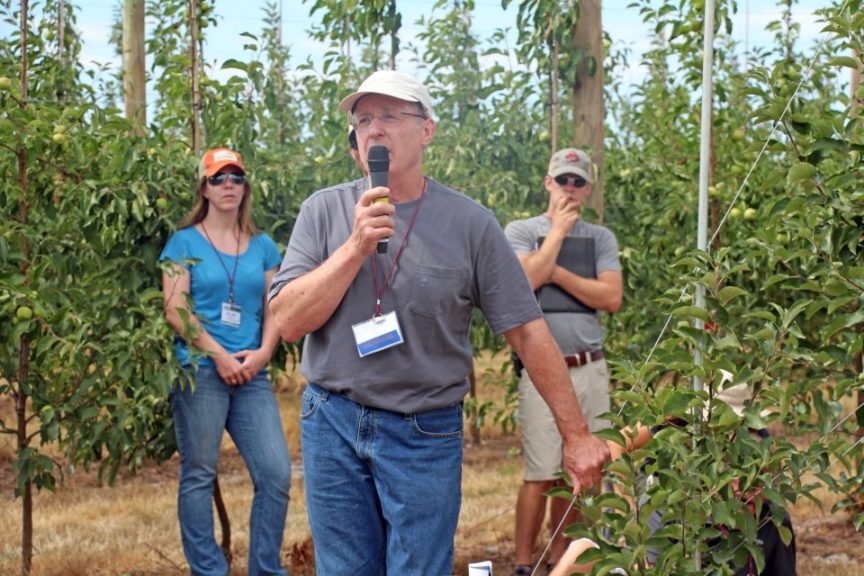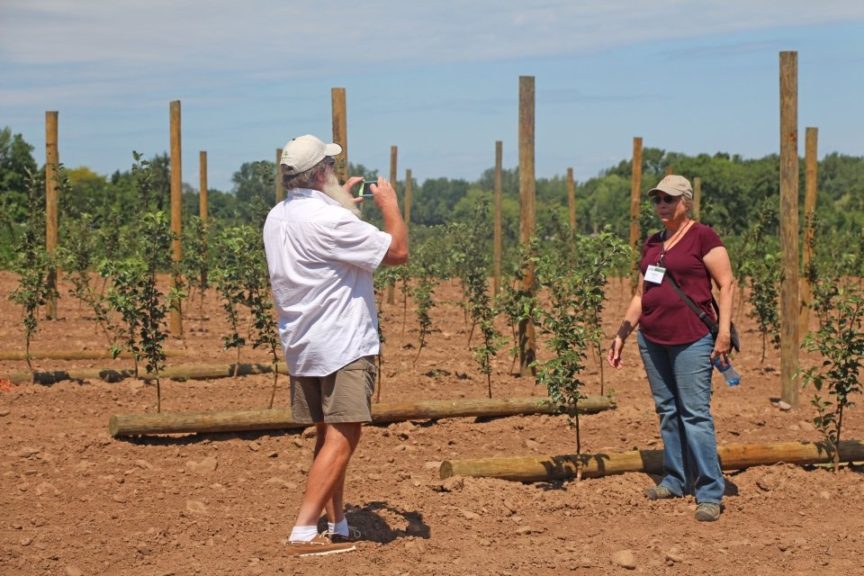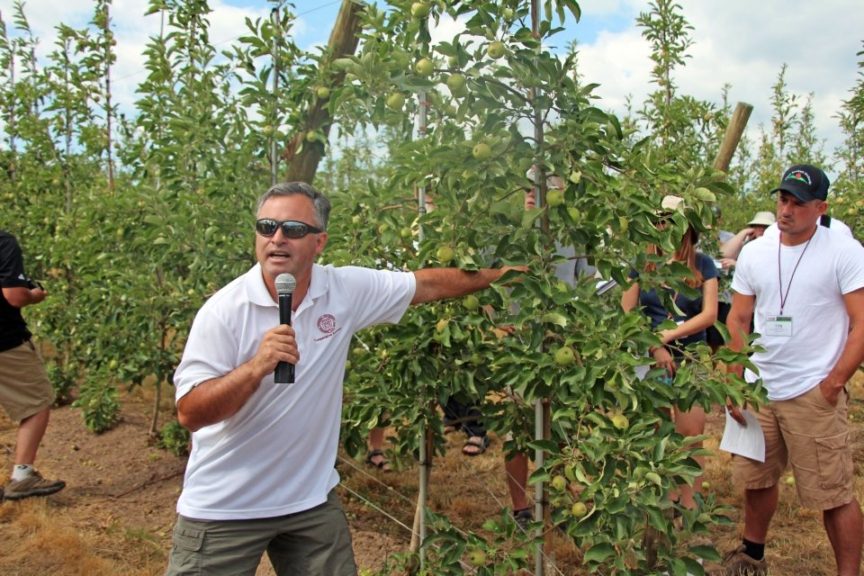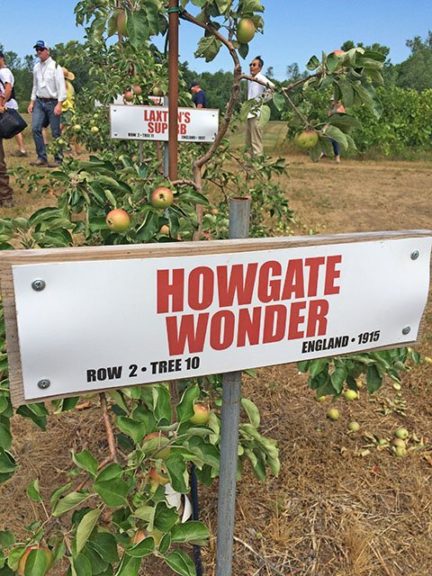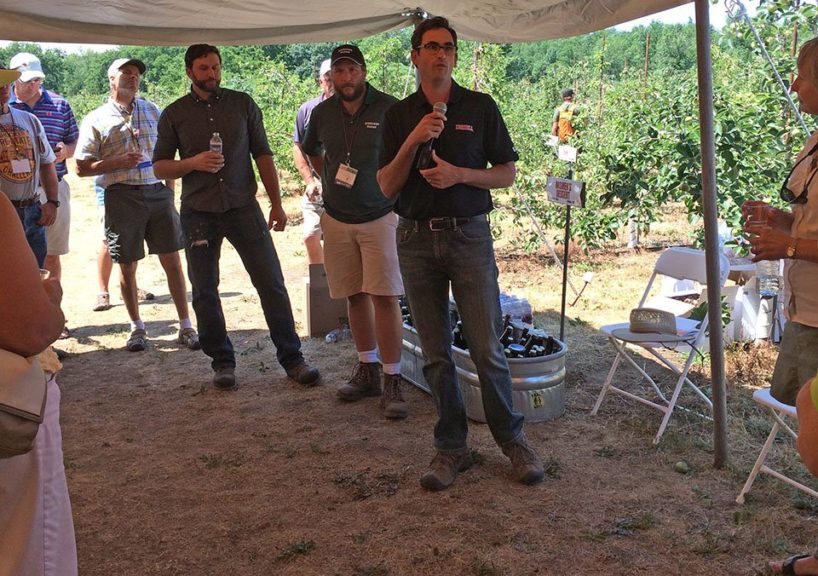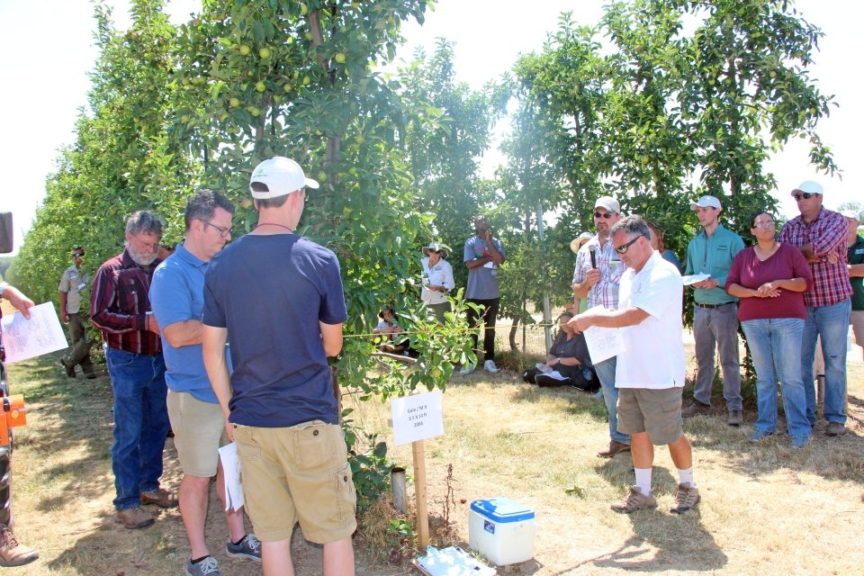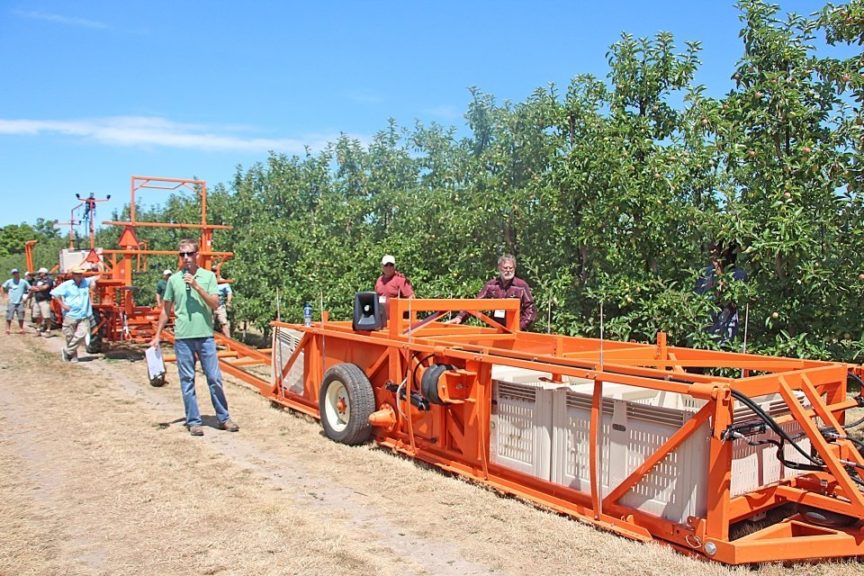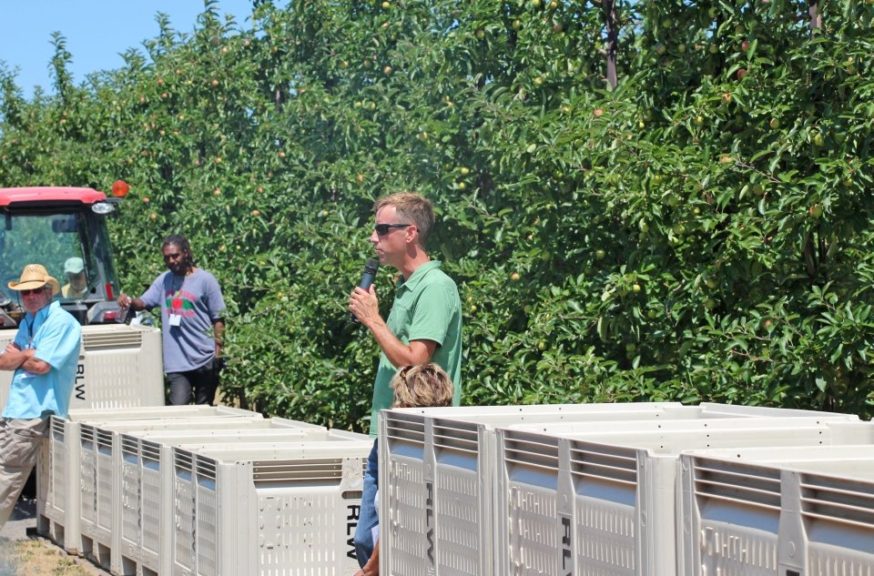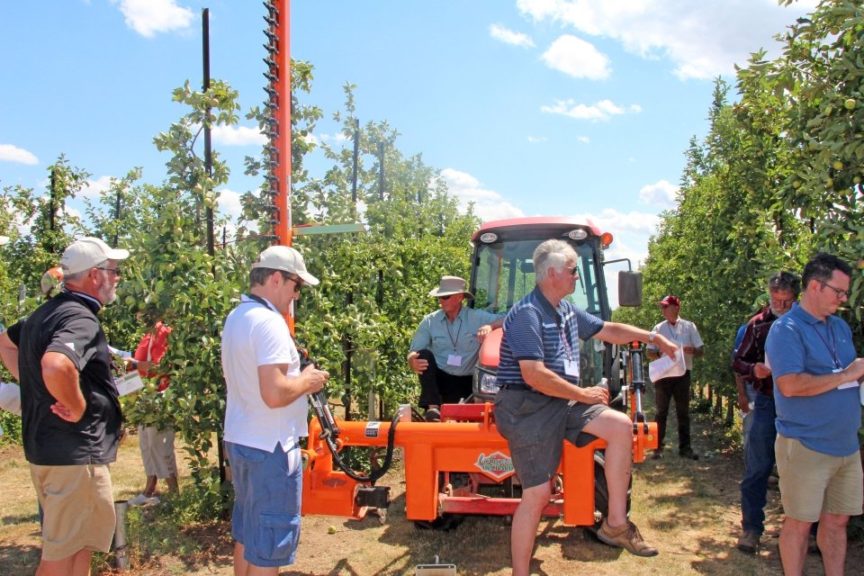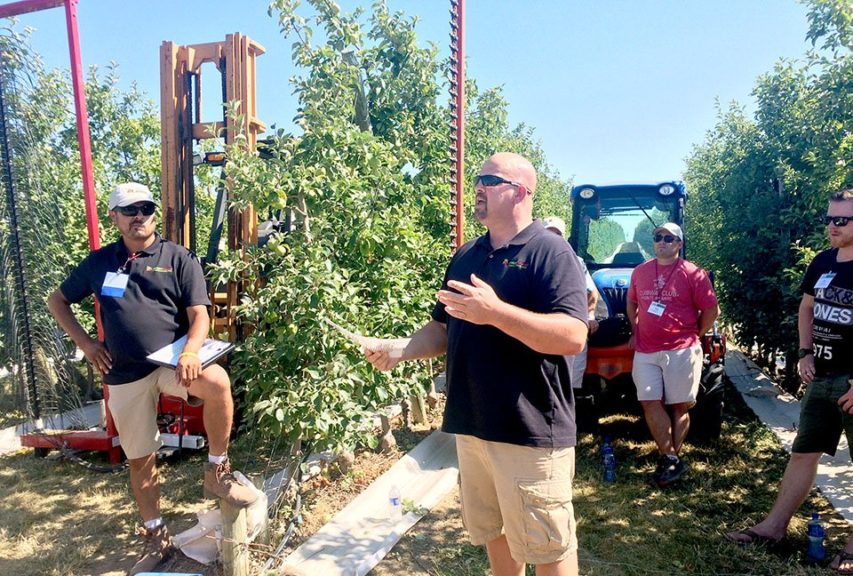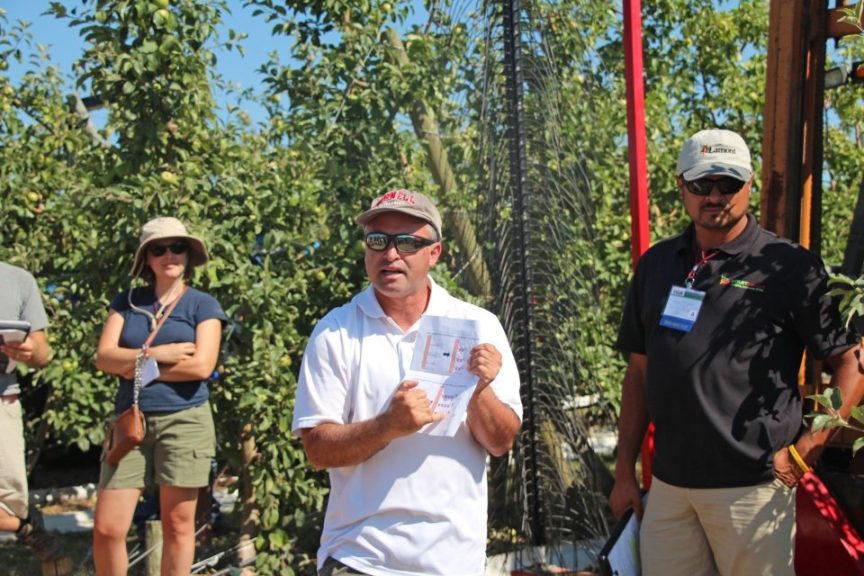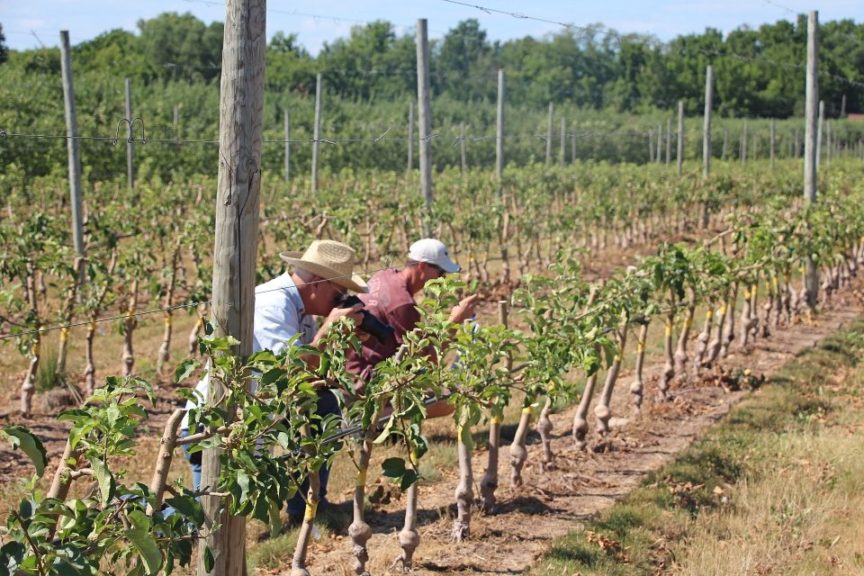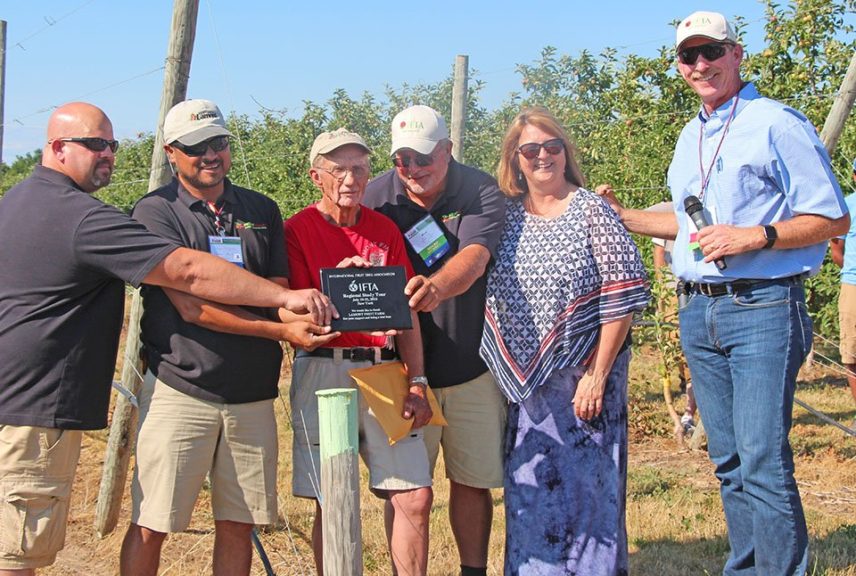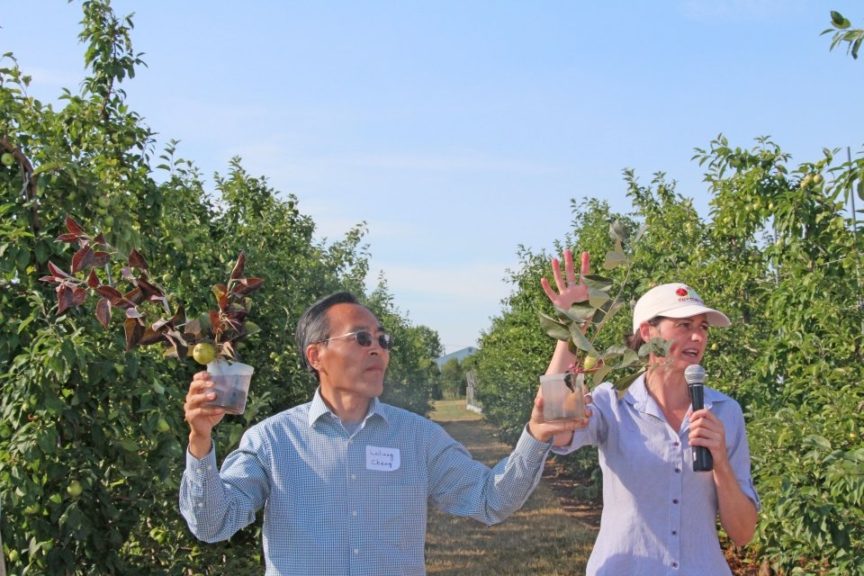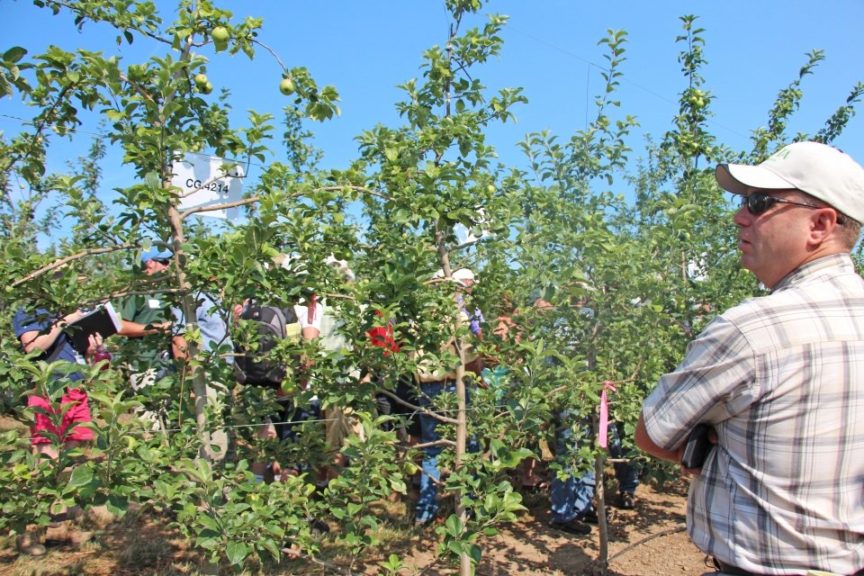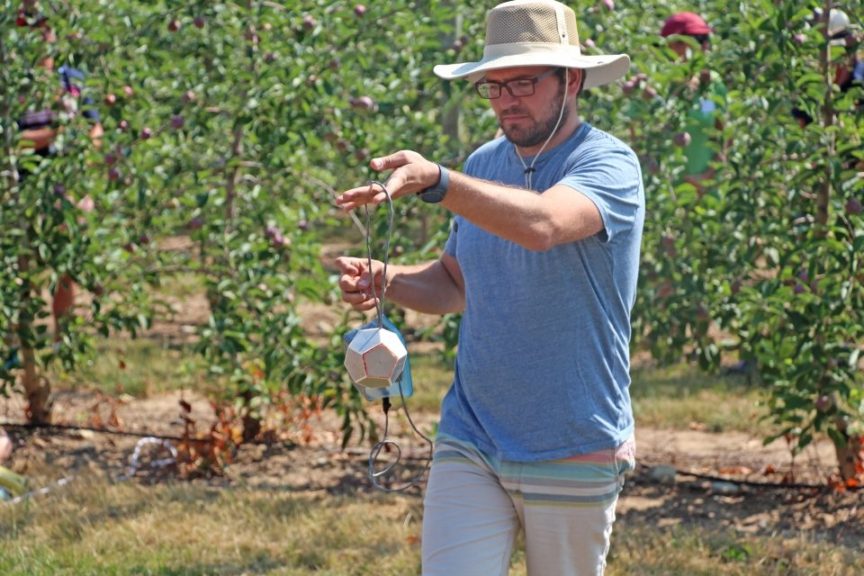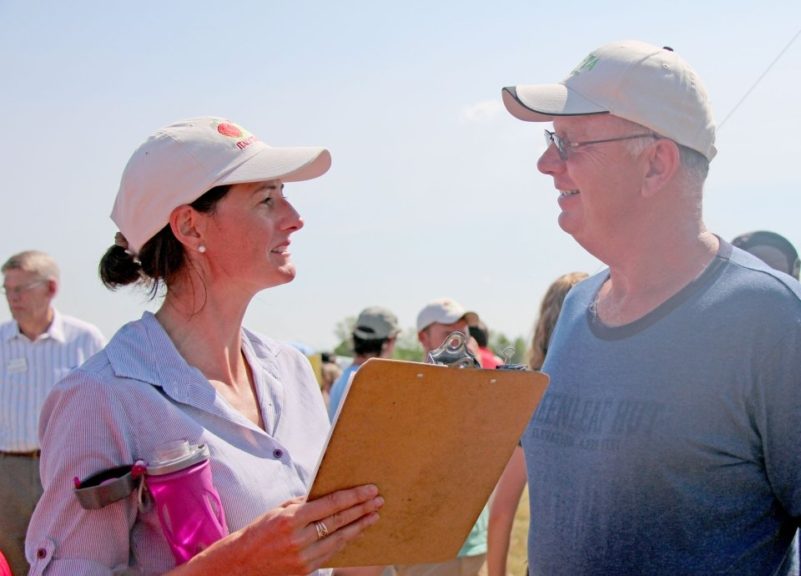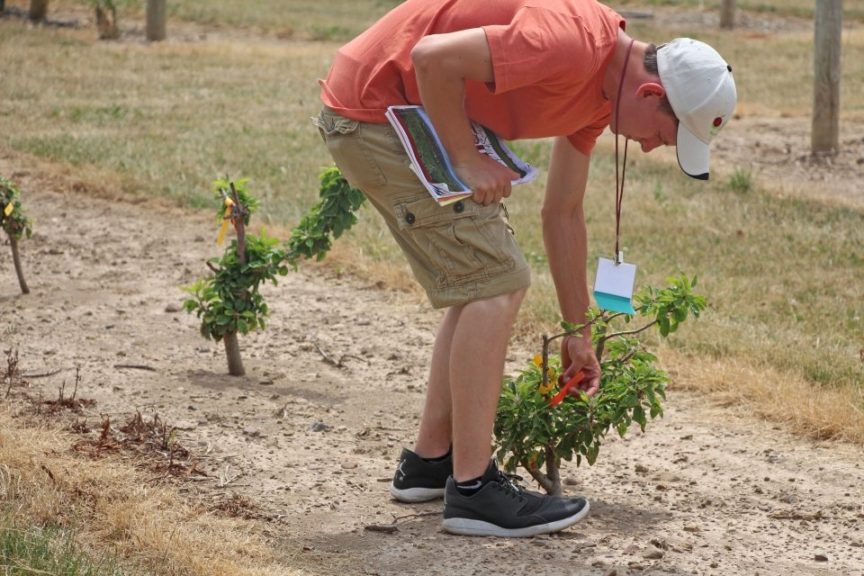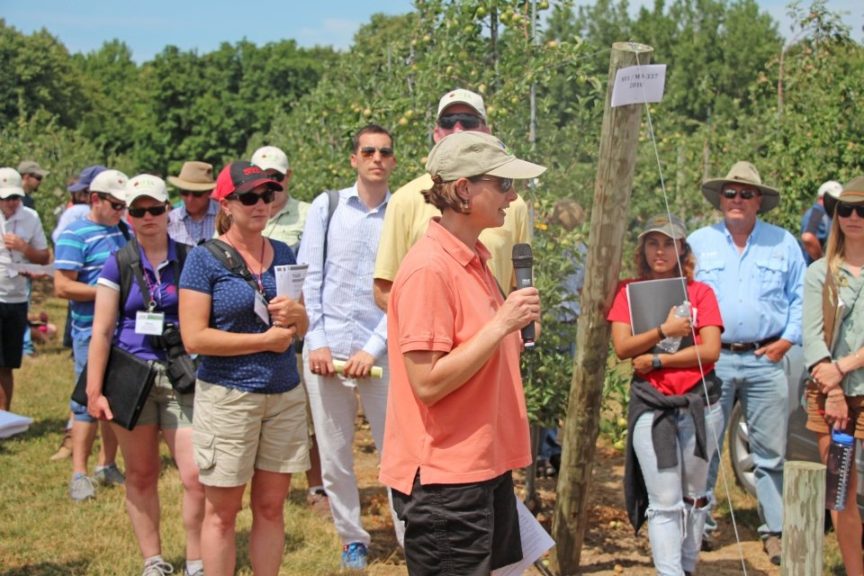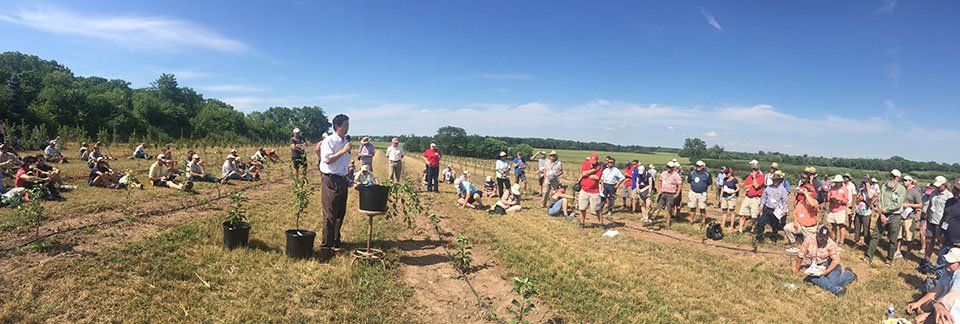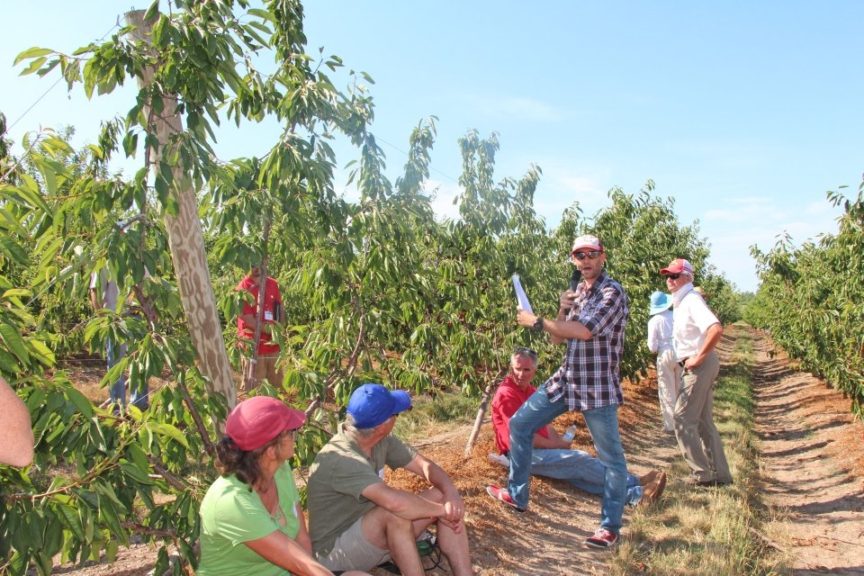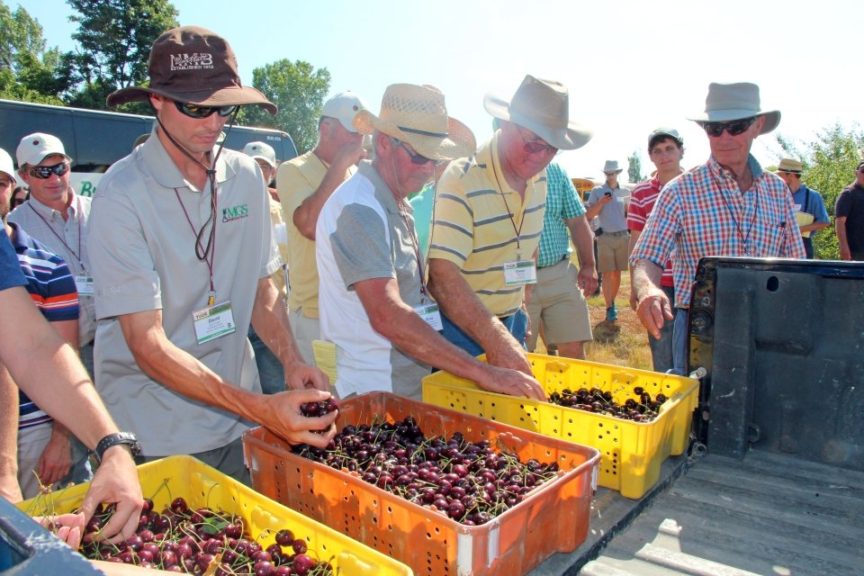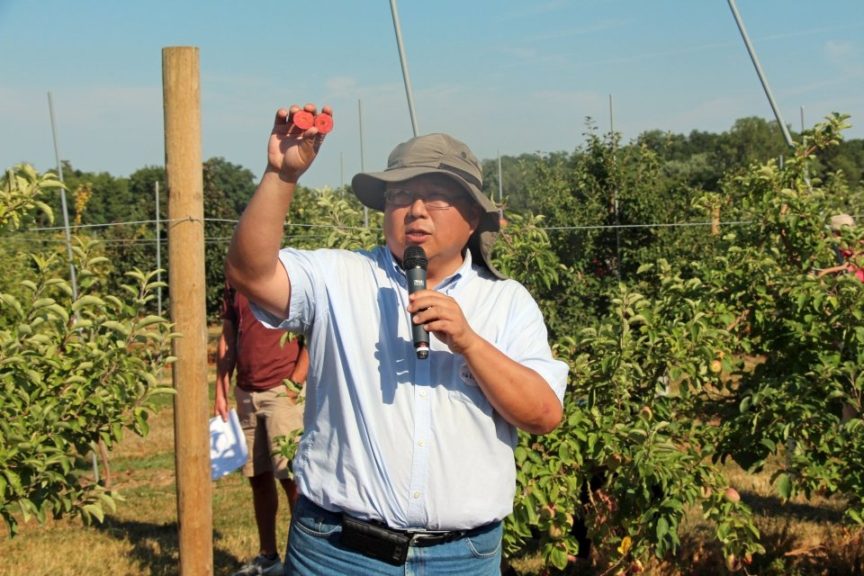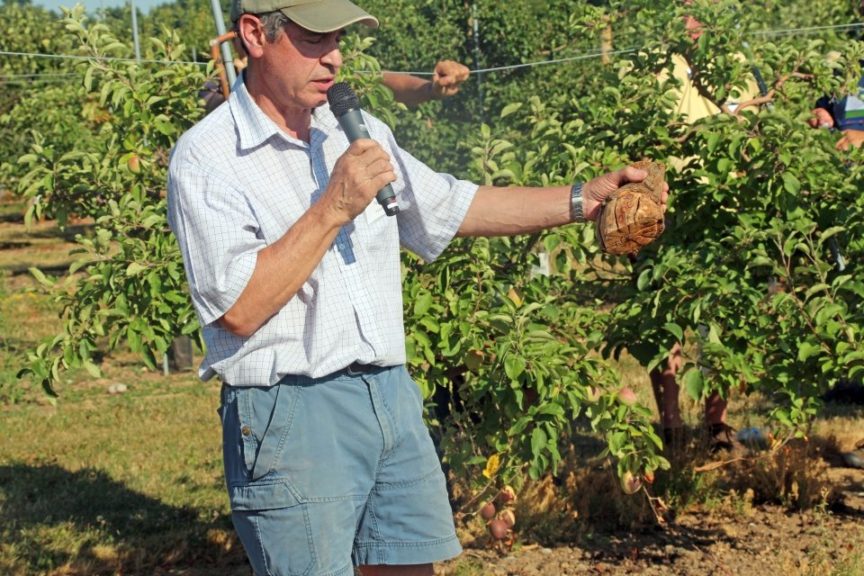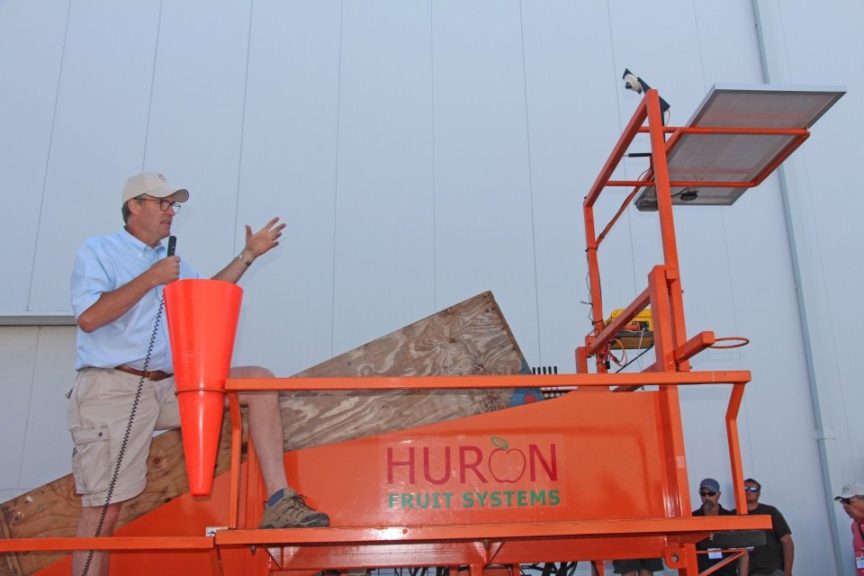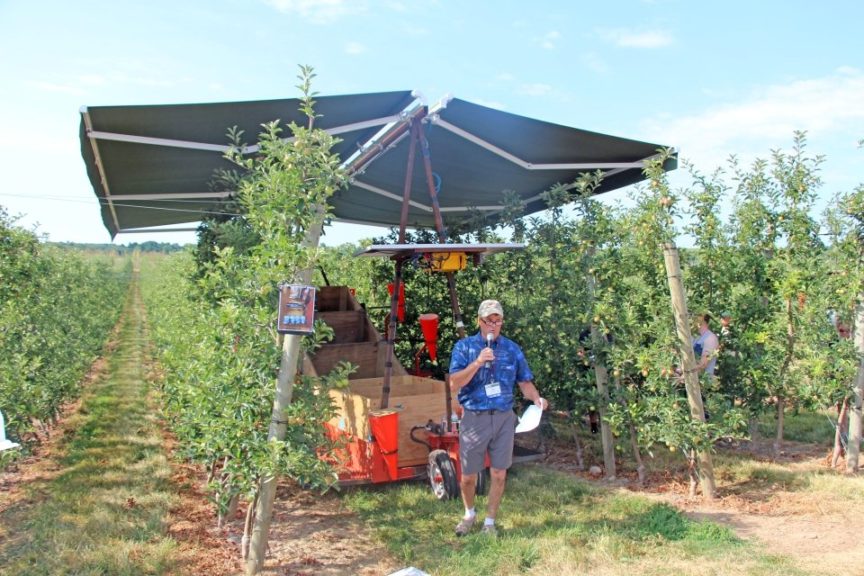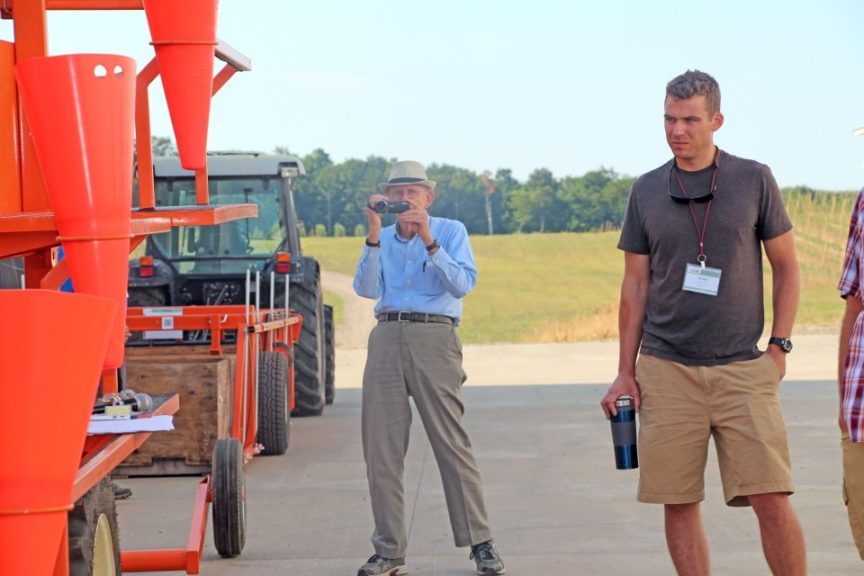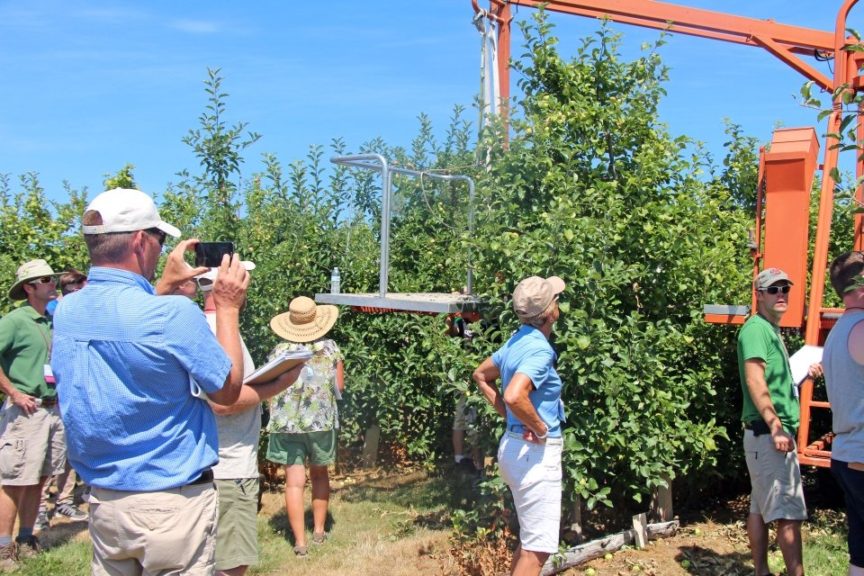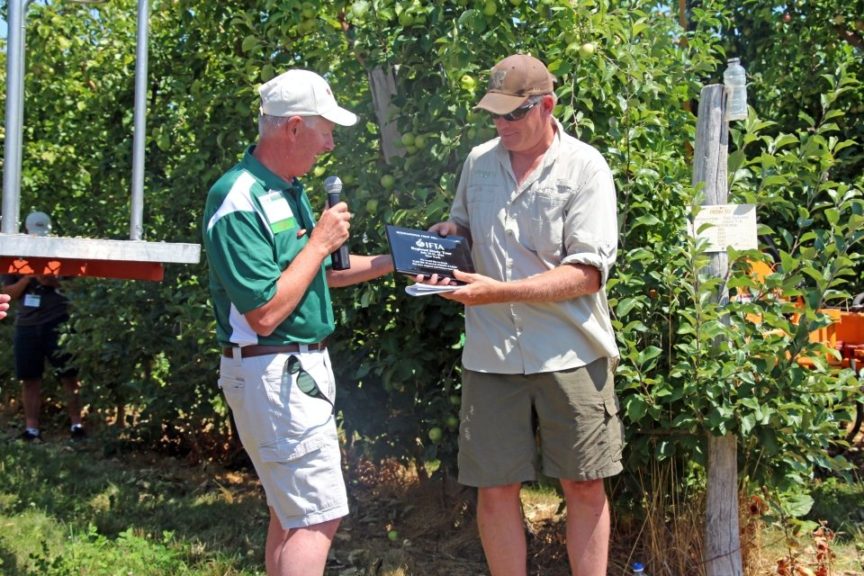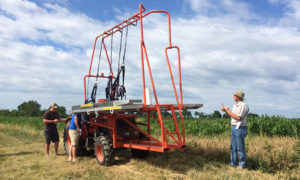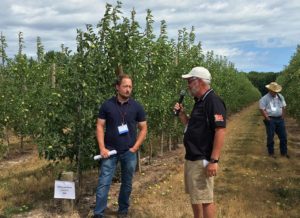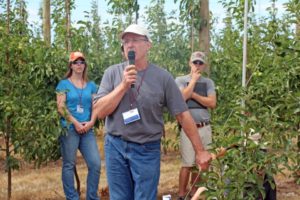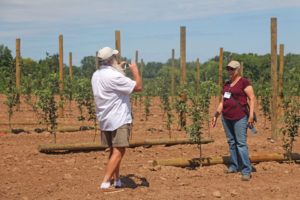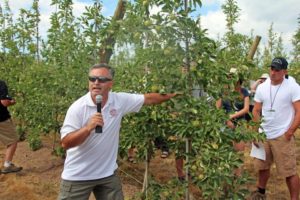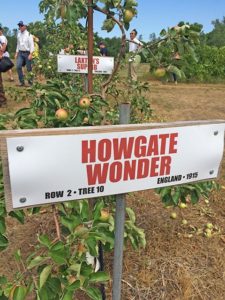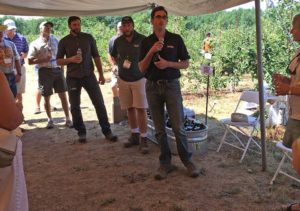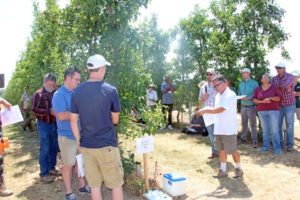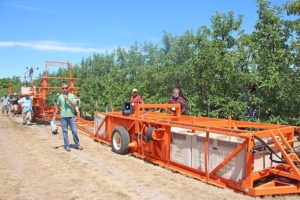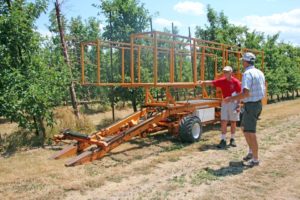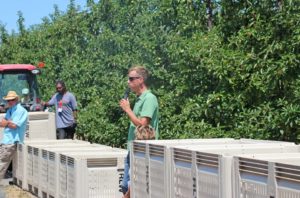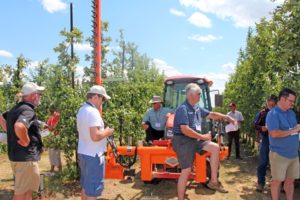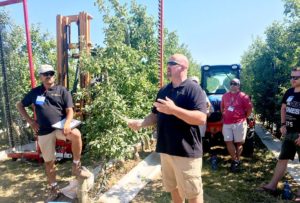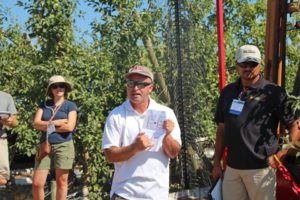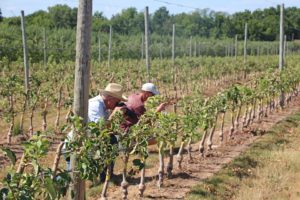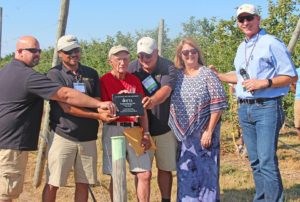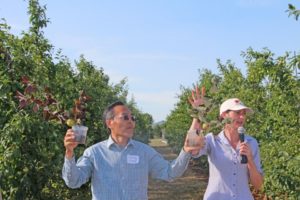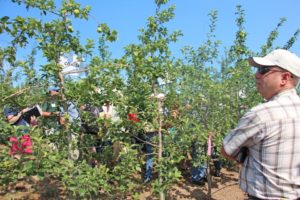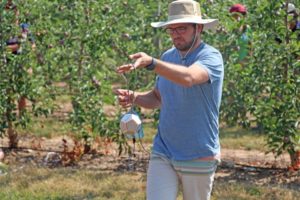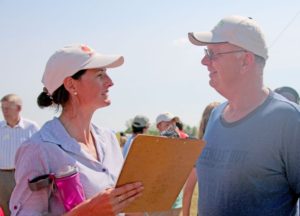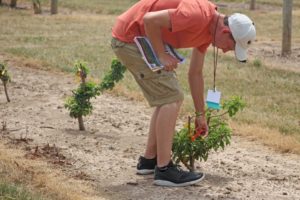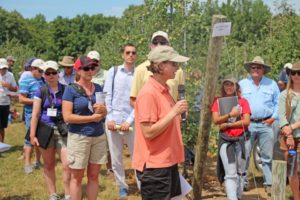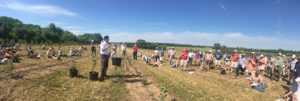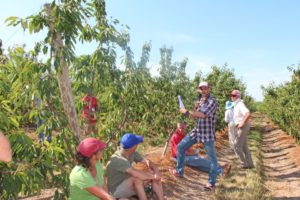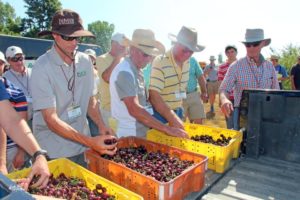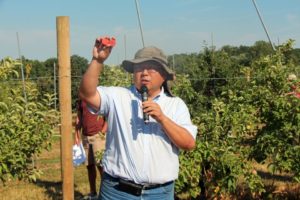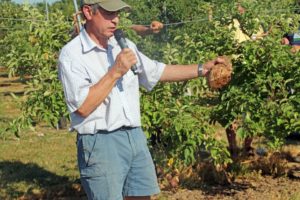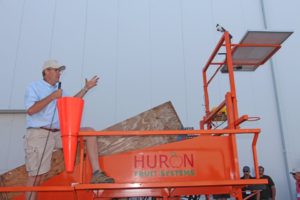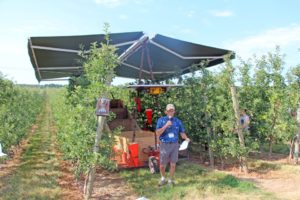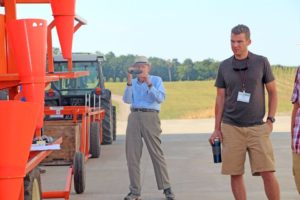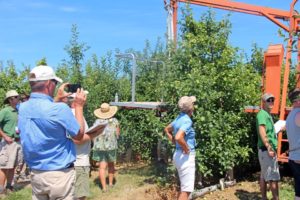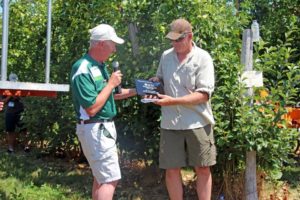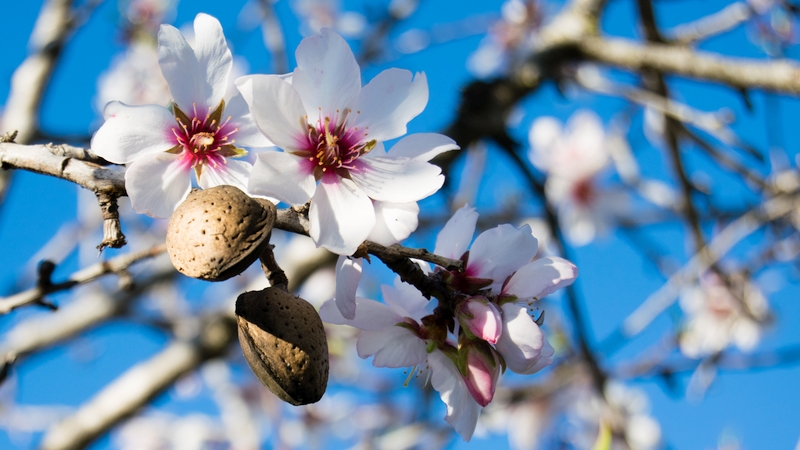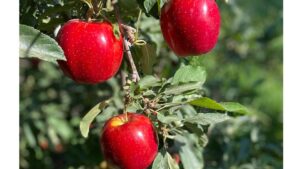Seeing The Real Big Apple In New York On IFTA Summer Tour
[blackoutgallery id=”132360″]
Drought. It’s a term synonymous with growing regions West of the Mississippi River, but an unlikely adversary in Western New York — where this year’s International Fruit Tree Association (IFTA) summer tour took place. The three-day event highlighted the production, progress, and potential of the tree fruit industry in Western New York.
Growers in this part of the country don’t often need drip irrigation, even for young apple plantings. But this year has been an exception for a region near Lake Ontario and the Finger Lakes. Amid all the green foliage, there is a lot of dust and brown grass.
Daniel Pettit of Pettit Farms in Medina, NY, says April was the last substantial rainfall for his family’s farm – where they had 2 ½ inches of precipitation. When the IFTA tour-goers visited, it had been seven weeks without precipitation.
“In all my years – and some older guys’ too – we have not seen a year like this,” he says.
Grower Jeff Smith of Ledge Rock Farms in Medina, NY, says he uses Cornell University’s Network for Environment and Weather Applications (NEWA) for his irrigation decisions. But, the choice of whether to irrigate or not hasn’t been all that difficult.
“This year it has been real easy, just turn the water on,” he says. “If you’re spending the type of money we are, it’s dumb not to [irrigate].”
The lack of precipitation is also a challenge for many Western New York growers who do not use drip irrigation. However, with the challenges this growing season has presented, growers may reconsider giving their young trees a boost.
“We are losing fruit size in Western New York because we don’t irrigate,” says Patrick Woodworth of Sandy Knoll Farms in Lyndonville, NY.
On-Orchard Nurseries
Some fruit farms in Western New York are starting to create their own nurseries. Sometimes it is out of convenience, as was the case with VanDeWalle Fruit Farm in Sodus, NY. The family needed to replant trees quickly, and their first attempt at a nursery didn’t go so well.
But, as things smoothed out, they are able to now produce around 400,000 trees in one nursery and 600,000 in another farm nursery. As more acres are added to the farm, these trees are in demand. Mike Maloney, who oversees the nursery, says the cost of trees is less, but “we’re incurring all the risk, we accept that risk as cost savings.”
Any issue with young trees can be addressed in the nursery, in order to deliver a consistent tree. Another benefit Maloney said is he and his crew can dig trees out of the nursery field and plant them the same day in the fall.
Although VanDeWalle’s nursery does not propagate any Geneva rootstocks in their nursery, Scott VanDeWalle is one of many growers partnering with Gennaro Fazio of USDA’s Agricultural Research Service on trials of some soon to be released Geneva rootstocks.
Jason Woodworth, Jose Iniguez, and Rod Farrow at Fish Creek Orchards (aka Lamont Fruit Farm) in Waterport, NY, also have a nursery. Their approach to planting is a bit of an accident. They left 3,000 trees in the nursery, so Iniguez decided to play around with dormant pruning, which turned out to be a happy accident, and once the trees were planted, they were very productive. Now, they grow 2-year-old trees before planting. They push branches down to grow big trees with 12 small darts, so by the time the tree is planted it’s 8 feet tall and has 14 darts.
Woodworth says the way they were planting and pruning trees, “we were never going to win [Terence Robinson’s] . But now, “look at that tree, it’s a good thing Terence is in Mexico because we’d be eating a whole cow.”
New Varieties
Growers in New York have had their fair share of challenges with the varieties originally called NY-1 and NY-2. NY-2 (‘RubyFrost’) is an average to high-vigor tree and NY-1 (‘SnapDragon’) is weaker than ‘Honeycrisp.’ Growers have found ‘RubyFrost’ to be very fire blight prone.
But Pettit, a sixth-generation fruit grower, says learning how to grow ‘SnapDragon’ has helped him improve how he approaches ‘Honeycrisp.’
“It kind of almost rejuvenated my interest for apple growing because I knew it was going to test my management skills,” he says.
Pettit says growers should start cropping ’SnapDragon’ soon, as it throws a lot of flowers and is weaker. The challenge is to grow this variety more vigorously. But, growers need to focus on the leader in order to ensure the tree makes it to the top wire of their tall spindle plantings. He de-fruited his trees in year 3 and 4, making sure to train the tree properly. Pettit planted his ‘SnapDragon’ on Nic.29, a Malling 9-type rootstock.
“I was determined to grow this thing. I remove blossoms, clipping branches back to focus on growing that leader.”
University of Massachusetts Extension Educator Jon Clements introduced growers to ‘Pazazz,’ – which he was quick to point out the proper way to spell the variety. ‘Pazazz’ is a club variety from Honeybear Brands.
Pettit has found that ‘Pazazz’ on B.9 will run out, and the variety has shown some frost sensitivity. But, his family’s orchard is in its fourth leaf and says it has also shown to be a more vigorous variety. “The growth has been substantial.”
The variety is picked around the last week in September, and is picked with acidity and put in storage.
Growers in Western New York are also focusing on planting ‘Sweet Cheeks’ for Hess Bros., ‘SweeTango,’ ‘EverCrisp,’ and ‘Koru.’ While at the Cornell Fruit Field Day, Susan Brown, head breeder at Cornell University, said there are some new varieties are that will be released in the next few years. They will be available to all growers, not just exclusively to New York growers.
Matt Wells of Cornell Cooperative Extension Lake Ontario Fruit program estimates growers in the Lake Ontario region are planting about 30% club varieties.
“If you have those varieties you’ll do much better with on-farm returns,” he says.
Mechanization
“When were platforms first used?” Wells asked the crowd.
A general consensus was more than 100 years ago, and have progressed from wagons to Friday baskets to what is happening now.
“Sometimes you don’t have the number of workers to get the job done,” which is where hand thinning with platforms comes in handy. In order to get the best return on investment, Wells suggests growers have a narrow canopy, with a flat fruiting surface.
“One thing you have to have is workers who work well together, they have to work as a team,” says Wells.
When platforms are used, growers can see a 40% to 60% efficiency gain, and he says one grower cut his hand thinning costs by $9,000. The benefit to a platform is it can set the pace for thinning work, as opposed to having the crew go at their own pace.
Pettit says as his family has transitioned to tall slender spindle plantings, the need for a platform became evident.
“None of our orchards looked like this. It paid for itself. You can really create a better orchard with a platform,” Pettit says.
Smith uses a LaGasse Works platform retrofitted on a tractor.
“I can take it off in 10 minutes and put it on in 15 minutes. It’s a low-cost way to get into platforms,” he says.
At Wafler Farms in Wolcott, NY, the focus is on efficiencies. Paul Wafler’s innovative tipped-in trees with a narrow row and a wide driving row help bring the fruit to the pickers who are on the platform he developed and is now marketed and sold by his brother, Walter, for Huron Fruit Systems.
Paul Wafler developed a bin tote that can unload bins and load bins, all while his employees are still picking.
“The whole operation comes to a grinding halt when dropping bins,” he says. “I prefer to be unloading and harvesting at the same time.”
Wafler also says he prefers pickers with little platform experience so he can train them to use his platform properly. He wants employees willing to learn.
“I love to have non-pickers come to the farm,” he says. “It doesn’t matter who we put on these machines.”
He says the challenge is with those workers who have experience because they’re less adaptable to Wafler’s harvest production system mentality.
“I can’t even break my bad habits,” he says.
Mechanical Hedging
Sandy Knoll Farms is using a mechanical hedger to help set the canopy.
Woodworth says hand thinning is still necessary, but when done properly, he can get 70% of fine fruiting with hedging units. The advantage, Woodworth says, is without mechanical pruning, he’s losing out on years 3,4,5, and 6. With mechanical pruning, it helps to keep the limbs narrow and increase the potential production.
“Mechanical pruning doesn’t mean you toss the loppers,” he says.
Woodworth, Iniguez, and Farrow at Fish Creek Orchards have been mechanically hedging their super spindle orchard for many years.
Woodworth and Iniguez and their employees start early with cuts, and are looking for 2-3 inches of regrowth. They have focused on dormant pruning to help set the canopy for better light interception.
Mario Miranda Sazo of Cornell Cooperative Extension, Lake Ontario Fruit program has also worked with Woodworth and Iniguez on trials of a Darwin blossom thinner in the orchard as well, with promising results so far,
“One of the good things about Rod (Farrow) not being around is we can play around in the orchard,” Woodworth says.
Although most growers are beginning to think about mechanical hedging. Wafler, the constant innovator, says he’s “walking away from hedging.” He says by having his employees on the platform with loppers, they are able to make decisions on what to cut based on where the branch angle is, and some of that is variety-dependent.
“I can generate a lot of revenue with driving my machine in the orchard,” he says.
Cutting-Edge Research
While on the IFTA summer tour, a day was carved out to attend the Cornell Fruit Field Day at the New York State Agricultural Experiment Station in Geneva, NY, where cutting-edge research is helping growers solve current problems as well as ones likely coming in the near future.
‘Honeycrisp’ is notorious for bitter pit. Researchers at Cornell are examining the nutrition balance behind the incidents of bitter pit, and how different the cultivar is nutritionally from other varieties.
Poliana Francescatto has been experimenting with ABA – or s-abscisic acid – to study how it may impact the rate of incidence of bitter pit. What happens, Francescatto says, is it the spray stops transpiration. She says in her 2015 trial, where she sprayed 400 parts per million per acre 15 days after petal fall, and every week for 10 weeks after, she saw less than 5% bitter pit, and 25% bitter pit in the control.
There is some concern about thinning, but so far in her research, she has not seen any thinning issues.
“It’s not going to make it disappear,” she says.
However, the results look promising. This year, she is testing timings of applications and combining sprays of ABA with calcium.
Matt Boucher, a research assistant in Kerik Cox’s entomology lab, is studying the impact insects may have on the spread of fire blight. Insects not only damage leaves and create an injury entrance point for bacteria, but can pick up bacteria from ooze or petals and move to another host tree to spread the disease. This is partially motivated by some streptomycin resistance being seen in New York.
Boucher says the potato leafhopper, several species of flies, as well as species of bees, are being looked at as how they carry the bacteria, and their potential to spread it through digestion and subsequent defecation. The end goal, Boucher says, is to make management practices for fire blight more sustainable, and reduce the risk of streptomycin resistance.
Landers and his research assistant, Palleja demonstrated some of the latest in technological advances in spray equipment. Sensor-driven spray flow and data sensing for spray effectiveness were among some of the advances they have helped develop.
Landers, though, acknowledges growers are often hesitant to invest in new sprayers.
“Most of you may not be interested in buying a new sprayer. You want to use a legacy sprayer [as opposed to a new sprayer],” he says. Landers and Palleja modified a “legacy” sprayer for automated spray flow.
However, Landers is quick to point out as young people enter the industry, technology is becoming a greater key.
“If you want young people to get in to the fruit industry, it has to be exciting – and electronics are exciting,” he says. “We want to bring the industry forward. We want to attract young people to fruit growing.”





